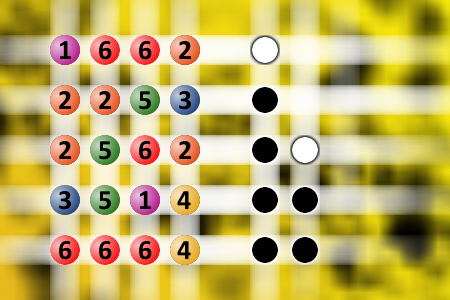Which is a winning combination of digits?
The computer chose a secret code (sequence of 4 digits from 1 to 6). Your goal is to find that code. Black circles indicate the number of hits on the right spot. White circles indicate the number of hits on the wrong spot.Correct answers: 50
The first user who solved this task is On On Lunarbasil.
#brainteasers #mastermind

A man walks into a pharmacy an...
A man walks into a pharmacy and wanders up and down the aisles. The sales girl notices him and asks him if she can help him. He answers that he is looking for a box of tampons for his wife. She directs him down the correct aisle.
A few minutes later, he deposits a huge bag of cottonballs and a ball of string on the counter.
The sales girl says, confused, "Sir, I thought you were looking for some tampons for your wife?"
He answers, "You see, it's like this, yesterday, I sent my wife to the store to get me a carton of cigarettes, and she came back with a tin of tobacco and some rolling papers; cause it's so-o-o much cheaper. So, I figure if I have to roll my own... so does she."
A few minutes later, he deposits a huge bag of cottonballs and a ball of string on the counter.
The sales girl says, confused, "Sir, I thought you were looking for some tampons for your wife?"
He answers, "You see, it's like this, yesterday, I sent my wife to the store to get me a carton of cigarettes, and she came back with a tin of tobacco and some rolling papers; cause it's so-o-o much cheaper. So, I figure if I have to roll my own... so does she."

